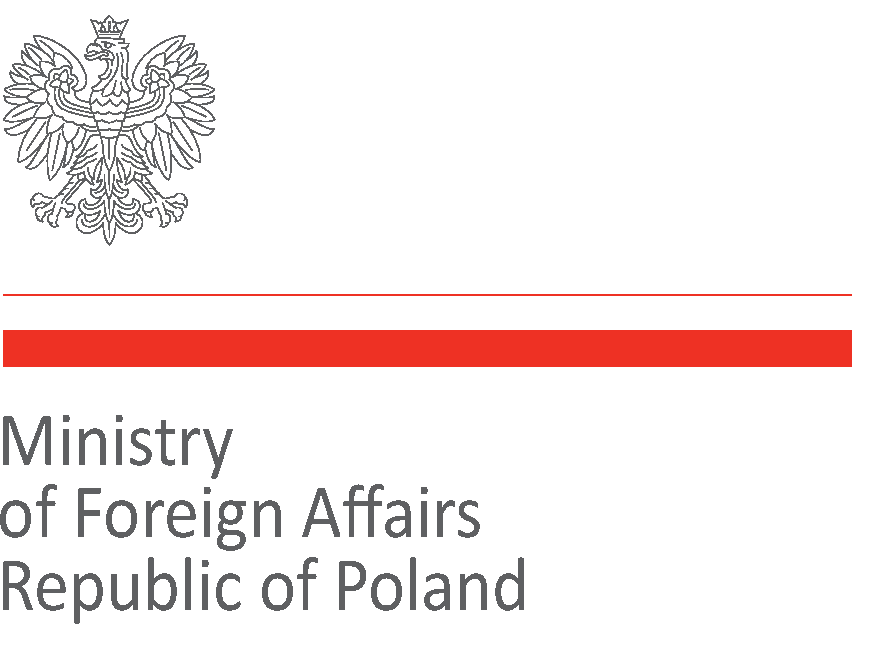The interwar period brought about a continuation of disputes over the model of modernization of Poland. In the initial period, these were mainly disputes between supporters of capitalist economic policy from national democratic circles, and leftists from the PPS [Polish Socialist Party]. Since the May Coup d’État, politicians and intellectuals associated with the Sanacja [Sanation] faction played a dominant role in formulating the idea of development. Among them appeared the concepts of statist development, retaining the components of the capitalist system, but establishing the state as both the coordinator of economic processes and main engine of development.
From the regaining of independence, and especially from the success in the first parliamentary elections, until 1926, national parties played the key role in the Polish political system. What did the country’s modernization program, formulated in 1918-1926, include? Implicite, it included the assumption of the need for modernization understood as the way to build a strong and competitive nation-state. Although various factions within the national democratic movement clashed, one can point to several key components of the program for Poland. The first component was the solidarist cooperation of social classes and social strata – that is, building a modern Polish nation beyond divisions[1]. Only in this way – according to the nationalists – the Polish state could become strong. Another common point, was basing the development of the economy not only on individuals, but also on the entire families.
The third component, was basing the state’s actions on the rule of law and honesty. The rule of law meant equal treatment of all by the state, predictability of the state institutions, and stability of the legal order. The rule of law was also associated with the issue of private ownership security, very important for the nationalists’ project. Already in 1919, in the 6th article of the draft constitution of the ZLN [National Populist Union], prepared by Głąbiński, it was emphasized that “the private property of a citizen is inviolable. Full or partial expropriation can only take place on the basis of a legal act, for reasons of public utility, and for the payment of just remuneration”.[2] Having such an attitude towards the right of ownership, the leaders of National Democracy were very critical about excessive state interference in economic matters, usually linked to socialism, and often associated with property violations. Many times, in the program documents it was emphasized that “no system has yet been invented that could replace the system based on private ownership”[3].
The fourth common point, was the removal of statism as an action incompatible with the needs and interests of the nation. Statism was treated as an economically ineffective system. The criticism of statism was accompanied by an emphasis on minimizing bureaucratic barriers, both due to their negative consequences for economy and corruption (both financial and moral) of the bureaucracy, as well as the high cost of maintaining these barriers which raised the costs of functioning of the state. Excessive bureaucracy was also a barrier to economic growth.
The fifth component was to include Poland in the global economy, but in such a way that it would take into account Polish vital interests. Due to the shortage of capital in Poland, foreign investment was a factor necessary for further development of the economy. Poland needed both foreign capital and technologies. The only caveat was that foreign capital should be “friendly to Poland,” which to some extent limited the available sources of such capital. Especially, it should not have come from Germany, because it would pose a threat to Polish interests. Just the import of capital and entrepreneurship of the Poles were not enough for the development of industry.
Therefore, the sixth indispensable condition of modernization were the actions undertaken for the development of industry. The industrial policy was not to rely on the state’s direct activity, but on the control of development and on the creation of incentives for investment and entrepreneurship. Already in 1919, the party’s program stated that “the guiding principle of Polish politics must be as little as possible of state coercion, as much as possible of a civic initiative. For its purposes, the state should first and foremost support and encourage the aspirations of citizens and of the population that are beneficial to the public.”[4] Two important functional justifications for the development of the domestic industry referred to increasing the affluence of the lower social strata, and thus to counteracting inequality and reducing unemployment in the spirit of solidarity, as well as becoming economically independent from the neighbouring countries. It is necessary to add a third justification, resulting from the concept of agricultural development: the absorption of rural residents, not needed for the work in agriculture and migrating to cities.
The seventh component was to be the reform of ownership relations in the countryside. Also, the transformation of villages into the Western model was to be one of the key stages of modernizing Poland. An especially important problem in the eyes of nationalists was the overpopulation of the villages. The answer to this overpopulation was to be agricultural reform, but carried out in a prudent way – rather to create a group of small landowners than to liquidate the great ownerships. Agricultural policy was to be strongly connected with industrial policy – overpopulation of the villages could only be limited by the development of industry and migration to the cities. This, moreover, would lead to the shaping of a modern social structure.
Finally, the last component was to organize public finances and improve their management. Finance reforms were to aim at organizing the tax system. Taxes were not to be an instrument of social justice, but a means of obtaining income by the state. At the same time, they were an instrument of civic education – education for honesty and the rule of law. In addition to a well-structured tax system, Poland needed strong currency – the implementation of this need was a monetary reform carried out by Władysław Grabski, a politician for many years associated with the National Democracy.
What modernization project emerged from these partial ideas, concepts and actions? Despite all reservations, the Polish economy was undoubtedly to be a capitalist economy, which did not mean that it was to be based on exploitation. The foundation of the social system was supposed to be inter-class solidarism, often opposed to the socialist and communist class struggle, which was subject to unambiguous criticism, such as, for example, the opinions on the tax system cited above. This solidarism also included cooperation of the villages with the cities. This resulted in the emerging critical opinions about the class programs of PSL “Wyzwolenie” [Polish People’s Party “Liberation”], and even PSL “Piast” [Polish People’s Party “Piast”]. In turn, the basis of the legal system was to be the security of private ownership opening the possibility of private enterprises. It were the actions of individuals that were to lead to modernization, and not just the organized and controlled state activity.
A remark on the social structure of the future Poland is also necessary to add here. The middle class was to become its basis. Its development were to take place especially thanks to limiting the size of the poorer social strata, which, in consequence, were to lead to the equalization of differences in affluence. This was also to minimize the chances of social conflicts. The development of industry, including large industry, ultimately were to lead to a change in the status of the country, from agro-industrial to industrial-agricultural, and in the further future even to industrial. This, in turn, was to reduce or eliminate the spheres of rural poverty. As Jan Zamorski vividly described, “the entire country could be covered by chimneys and factories, could change into an uninterrupted sequence of cities and factory chimneys.”[5]
Polish capitalism were absolutely not to be state capitalism[6]. Excessive growth of all types and levels of bureaucracy not only led to economic inefficiency, but usually also caused negative ethical consequences due to the lack of a real owner. Thus, in the statements issued by the National Democracy, both statism and the creation of bureaucratic barriers, as well as poorly designed tax system and excess administrative structures, were criticized.
Such a firm position towards statism in the views of nationalists gradually diminished. During the Great Depression, national groups increasingly accepted statist solutions, similarly, the supporters of moderate statism were Christian Democrats and many Catholic thinkers. In the 1930s, the young generation began searching for new economic solutions. On these searches, the Great Depression left its mark, leading to disappointment with capitalism and fascination with the efficient functioning of totalitarian states. Increasingly more often, more or less utopian recipes for the construction of a better world appeared, but they generally denied capitalist economic model. Such concepts include, on the one hand, the views of Adam Doboszyński referring to the idea of the new Middle Ages, and the ONR [National Radical Camp] economic ideas on the other. In the first half of the 1930s, the concept of Doboszyński seemed attractive, which de facto rejected the idea of modernity. Later, representatives of the divisive parties (especially ONR) discussed the possibility of using totalitarian solutions. What can be said about this declining period of formulating national democratic thought in the Second Polish Republic? Undoubtedly, it was anti-system, rebellious thinking, an escape to the utopia of the external control of the individual – the control which would be carried out by institutions such as family, church and tradition, or a totalitarian state. In this way, the thought of the National Democrats has come full circle: from the anti-system ideology of the generation of “Głos” [“Voice”] and the first “Przegląd Wszechpolski” [“All-Polish Review”], to the anti-system beliefs of young nationalists of the 1930s.
Radically different economic concepts were formulated by the PPS. Although the aim was also to modernize the state, to create a modern Poland – in this case, socialist and democratic. In the first period of their existence, the nationalists made the mythologized people, and later the middle class, the key social layer. A similar place in the views of the PPS was taken by the working class. The place of national solidarism was, on the other hand, occupied by the struggle of classes: for Ignacy Daszyński, the independent state was to become a field of a modern class struggle, suppressed by the invaders. The Polish state, in the opinion of the pro-independence left, were to be established not as a national project, an emanation of the nation, but as a realization of the interests of the Polish working class. The concept of this state was an attempt to combine the socialist idea – the emancipation of workers, with the idea of independence. In this sense, the PPS’s concept of an independent state was on the antipodes of the national concept: it appealed to both the idea of class struggle and the tradition of independence-insurgent “romantic” patriotism, so mocked by nationalists.
The PPS also had a rather ambivalent attitude to private ownership. Despite the fact that with the passage of time it was increasingly accepted by socialist politicians, the categories of exploitation and oppression of the working class were invariably present in their views. Norbert Barlicki, still at the beginning of the 1920s, stated during a parliament session: “For us, socialists, private ownership, especially great private ownership, is a privilege that is no more than a disease of society, which is a relic of the Middle Ages.”[7] And yet, the modernization process was to be such a rebuilding of society and economy which would create a modern Polish society, free from exploitation. This was to be favoured by the democratization of the society, and the transfer of as many decisions as possible to the local level – decentralization and introducing self-government of the state. Similarly, the sphere of production was to be self-governed (or socialized). The state was also to provide free education at all levels.
An important political category for the PPS was socialization. Means of transportation, production tools, and the land were to be socialized. In this case, the agricultural reform was to become an indirect step. In the most consistently formulated programs (e.g. in the program of the PPS “Revolutionary Faction” of 1907), the ultimate goal was to build a state and society based on the principles of socialism – taking over the means of production and enterprises and establishing common property, abolishing hired labour and giving control of the economic life to the “working people.” After regaining independence, the PPS, despite the revolutionary slogans, pursued the policy of the social democratic party, proposing the construction of a welfare state, with an extensive scale of state intervention, and not of a socialist state.
In this context, the role assigned to the tax system was, of course, different to that of national parties. It was to have two functions: first, to ensure that the possessing classes would finance the modernization process. Second – to be a weapon of social justice: the introduction of progressive income tax, property tax, and inheritance tax, confiscation of property, reduction – or abolition – of direct taxes, especially in relation to basic goods, was an idea for eliminating financial inequalities.
Definitely more radical views on modernity than the PPS had the radical left. It negated the idea of the struggle for independence entirely, as it was contrary to the processes of progress. Therefore, in the SDKPiL [Social Democracy of the Kingdom of Poland and Lithuania], two opinions on the struggle for independence were formulated. According to the more radical one, it was simply contrary to the goals of the proletariat. In a gentler approach, the emergence of an independent state as a transitional phase was acceptable (though it never became a political goal), as long as it would improve the living conditions of the proletariat.
The real goal of the Polish radical leftist was the emancipation of the working class through the cooperation of workers from all over Europe (controlled of course by communist activists), and not national emancipation. The way to implement this idea was to overthrow capitalism and, consequently, socialize the means and tools of production which were then to be taken over by the producers, namely the workers. This idea for modernity was extremely different from the nationalist one – its aim was to build a world without states and nations. The practical consequences of its implementation could be observed in communist Russia after 1917. In Poland, the reluctance to national states caused the former activists of the SDKPiL to establish the Provisional Revolutionary Committee, while entering Poland with the Red Army, with an aim to turn Poland to another Soviet republic. The views of Polish communists, or at least of a significant part of them, have not undergone substantial changes during the interwar period.
Finally, the third of the projects of radical socio-economic changes in Poland, competing with the national-democratic one, was the project, or rather a group of projects formulated by various peasant groups. Although they were significantly different, they had some common features. Above all, the improvement of the economic situation of the peasants was the centre point of their interest, therefore, to a large extent, they referred to class interests. All of them postulated large-scale agricultural reform, but it was difficult to find proposals on how to reduce agrarian overpopulation, or how to develop the remaining sectors of the economy, other than agriculture.
From 1926, the Sanacja factions played a key role in the political system and in the process of formulating political ideas. For a long time, during the crisis, most of the Sanacja movement politicians presented rather liberal views on the economy. However, from the end of the 1920s, the movement of statists (and practitioners of economic policy – the state officials) revealed itself on the left wing of the Sanacja parties, namely the so-called First Economic Brigade [Pierwsza Brygada Gospodarcza] (PBG), with Stefan Starzyński. The Labour Government Program in Poland (1926), formulated by him, was one of the first systematic proposals for a policy of development induced by the state, articulated among the Sanacjaelites. In this programme, Starzyński promoted protectionist tools, as well as the introduction of state production control, further agricultural reform, and administrative actions directed at modernizing Poland. He also stressed the need for infrastructure investments, such as the construction of a seaport (Gdynia), or the Silesia-Baltic sea coast railway line. These concepts did not explicitly introduce statist ideas. Later, in the PBG concepts, an ever greater emphasis was put on statism, namely on the necessity of direct involvement of the state in economic activity, when market mechanisms and private entrepreneurship fail, without creating conditions for catching up rapidly with the West. With limited availability of private resources, it was statism and interventionism which were to be the means for economic development.
However, the fully statist development program was formulated by Eugeniusz Kwiatkowski, the architect of Gdynia, and the Minister for Industry and Trade. In his book, Dysproporcje. Rzecz o Polsce teraźniejszej i przyszłej [Disproportions. The thing about present and future Poland] (1930), he pointed out the need to implement a comprehensive plan for the modernization of the country. He believed that the state should give a boost to modernization. His views, formulated from the beginning of 1930, grew in political significance after Piłsudski’s death.
At the end of the 1930s, in an unfavorable international climate, politicians of the Sanacja faction increasingly agreed that the market, treated as a coordination mechanism, failed. Similarly, they more and more often assumed that the institutional framework alone would not make Poland a modern country. Kwiatkowski included both of these convictions in the economic program, in which the state was to take on the role of the market to a large extent, and at the same time it was not only to direct, but also impose modernization processes. It was to become the agent of change, while its institutions were to be used to change social attitudes. Social change was to take place through a shortcut – moving people to state-owned factories and simultaneously built factory cities, was to allow for the process of not only economic, but also of political and social modernization, to be completed in 15-20 years. The statist modernization was also to help in the elimination of development and property inequalities, hence the division into Poland A and B.
It is worth noting that his program was not only economic, but also social. This social modernization was supposed to be carried out through methods other than those obvious to today’s modernizers, its result was to be not only the diminishing of the borders between Poland A and Poland B and the civilizational development of the Polish villages by solving the problem of young illiterates, but also the ultimate Polonization of the structure of Polish cities. Civilizational successes were to be accompanied by the integration of the nation, understood inclusively by Kwiatkowski, although in the conditions of growing ethnic conflicts this goal could prove impossible to implement.
The views of the Polish statists – although they responded to social demand and were a natural reaction to the crisis of the world economy which was deep and difficult to comprehend as well as control – found their critics especially among liberally minded economists and also some businessmen (though Kwiatkowski’s inclusion of business in his project of a four-year plan has largely neutralized this criticism). Critics pointed to the ineffectiveness of state (non-market) coordination mechanisms, and also to waste, corruption, as well as the wrong decisions on the allocation of funds.
A broader view on the dispute over the legitimacy of the statist solution is also possible. In a way, it was a reflection of wider disputes over the model of modernization which have been going on among Polish elites for a long time (and which characterized the debates about modernization of the peripheries). The two dominant strategies, derived from those disputes, can be summarized by the following words: build institutions and within them the Poles themselves will find modernity (early Dmowski, Grabski, and Piłsudski, among others), or build factories and cities to systemically transform the Poles to become modern (PPS, Kwiatkowski, Starzyński, among others). The answer to the question which one of these strategies to choose, though it may seem simple, was in fact not easy at that time, and remains unobvious to this day. The strategy based on the conviction that these enlightened elites must modernize Poland and the Poles, without proper consultation with them, is a permanent post-enlightenment component of Polish politics, reinforced additionally by unfavorable civilizational conditions, or external pressure of modernization. Politicians of independent Poland, from the beginning of its existence in 1918, had to face unsolvable problems: capital shortage, lack of personnel, reluctant or hostile neighbours... Hence, the need for modernization was urgent, and the temptation of a “shortcut way”[8] was great. Seeing the state as the agent of change, setting development directions not with a set of incentives but by its direct involvement, seemed quite reasonable, especially in the conditions of the collapse of market economy, and the loss of faith in capitalism by an entire generation. Also, the ideas of the COP [Central Industrial District] and the success (at least a short-term one) of the policy of a modernizational push and the concentration of funds, influenced the views of economists, including Paul Rosenstein-Rodan and Michał Kalecki, who co-created a new sub-discipline: development economics.
[1] It was not without significance for nationalists to oppose antagonisms and regional differences – their concept of state was very different from the Piłsudski’s idea of a federal state.
[2] S. Głąbiński, Projekt konstytucji Rzeczypospolitej Polskiej [Draft constitution of the Republic of Poland], Druk sejmowy nr 443 D, quoted in: Projekty konstytucji Rzeczypospolitej Polskiej [Draft constitutions of the Republic of Poland], Warszawa 1920.
[3] Ibidem.
[4] Program ZLN [ZLN Programme], op.cit., p. 6.
[5]Ibidem, p. 160.
[6] The term “state capitalism” to describe the state of the Polish economy was directly used by Roman Rybarski in his Sejm speech of 30 May 1928, criticizing the economic policy of Sanation; Cf. Roman Rybarski o narodzie, ustroju i gospodarce [On the nation, system and economy], Warszawa 1997, p. 68.
[7] N. Barlicki, Muszą zamilknąć spory na lewicy: Wybór pism [The disputes on the left must stop: A selection of writings], Warszawa 1980, p. 36.
[8] The term “shortcut” was used by H. Szlajfer in his book Droga na skróty. Nacjonalizm gospodarczy w Ameryce Łacińskiej i Europie Środkowo-Wschodniej w epoce pierwszej globalizacji [A shortcut. Economic nationalism in Latin America and Central and Eastern Europe in the era of the first globalization], Warszawa 2005.







